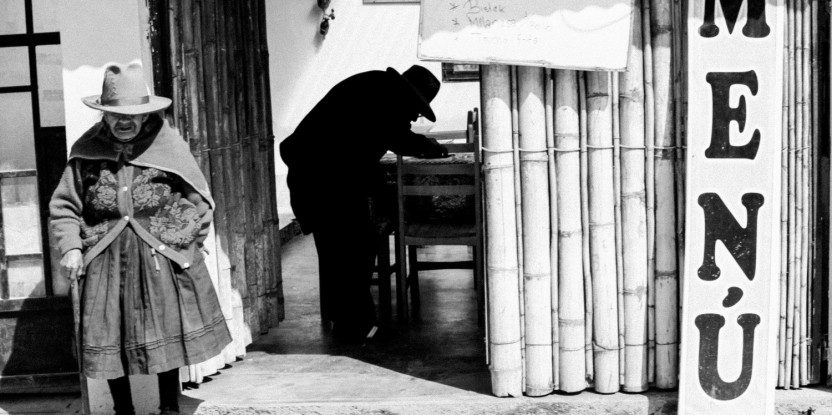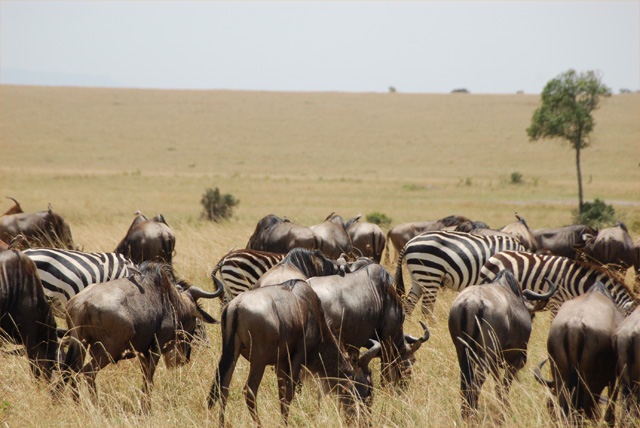
LIMA, Peru—In the rural border areas where Colombia, Peru and Brazil converge, bushmeat provides nutrition and a strong connection with indigenous tradition.
But as more people move into towns, daily meals are less likely to be bushmeat (such as tapir, deer, monkey or tortoise), than industrially reared chicken and tinned meats, according to a new study from the Center for International Forestry Research (CIFOR).
To put together the study, part of CIFOR’s Bushmeat Research Initiative, scientists worked with local game hunters and traders to gather data. In all three countries, commercial hunting is illegal although hunting for the family table is allowed.
Residents of riverside communities near the remote Amazon basin border areas continue to eat a wide variety of game, and more than a dozen species of fish. Their diets are rich in low-fat protein and a variety of micronutrients.
But in urban centers consumption is declining.
The scarcity of wild game around those centers is one reason for its drop in popularity. Globalization means that tinned meats and chicken are more readily available and cost less, even though they are shipped from southern Brazil. People for whom these are staple foods have more fat and salt in their diets, but less variety in micronutrients, the study claims.
“People who eat wild game and fish have a more varied diet,” says CIFOR’s Nathalie van Vliet, one of the authors of the study. “Bushmeat can be hard to locate and it’s more expensive in towns. But in many city people’s eyes, wild game is healthy and nutritious. People won’t eat it often, because you have to know where to buy it, while you can find chicken everywhere.”
There are some people who don’t eat it because it’s illegal or because they are worried about conservation van Vliet says, but while there is a bushmeat market in both rural and urban areas there remains a demand for hunters.
People who have moved away from more traditional meat will enjoy it as a way to connect with family
“Wild game is extremely important for families that include hunters,” she says.
Most hunters sell about half the game they kill and their income can be many times the minimum wage.
“There aren’t a lot of people in the market chain, but they handle significant volumes of meat,” van Vliet says. “And that benefits the community economy because that income is invested locally.”
MONEY AND CULTURE
Besides its economic importance, wild game meat helps maintain the social and cultural ties in which relationships are built, survive and depend, in part, on the exchange of gifts of food and other items. And when it comes to festivals and celebrations, wild game is often the go-to food.
Van Vliet says that it is way of maintaining a cultural identity.
“Those times keep people in touch with their cultural roots,” she says. “People who have moved away from more traditional meat will enjoy it as a way to connect with family. The food doesn’t disappear, it’s just eaten less frequently.”
Although our main interest was wild game, we ended up learning a lot about nutrition in general
Although the ecological implications of bushmeat consumption also concerned the research team, van Vliet and her colleagues intentionally focused on other facets of bushmeat use to explore complex issues raised by the use of game in people’s diet: the nutritional, economic, and cultural impacts.
Their findings have implications for policy makers, she says.
One issue is that a commercial market for wild game exists even though it is illegal, suggesting that the money spent on punishing those who violate the law might be better invested in monitoring and incentives for the sustainable management of common species, along with strict controls on those that are threatened.
“There is a need for integrated policies that involve cultural aspects, human health and the sustainable use of wild game,” van Vliet says. “With sustainable-use policies countries could improve nutrition and protect people’s right to their cultural identity.”
Members of one community have asked the researchers to help them design a sustainable game management plan, and the scientists are exploring ways of using modern technology—such as cellphone apps—to track hunting patterns.
“Although our main interest was wild game, we ended up learning a lot about nutrition in general,” van Vliet says. “There are implications for policy there too, in terms of what kind of diet is promoted in these regions.”
Natalie van Vliet is a Scientist at the Center for International Forestry Research (CIFOR). For more information about bushmeat in South America, please contact n.vanvliet@cgiar.org
This research was carried out by CIFOR as part of the CGIAR Research Program on Forests, Trees and Agroforestry.
We want you to share Forests News content, which is licensed under Creative Commons Attribution-NonCommercial-ShareAlike 4.0 International (CC BY-NC-SA 4.0). This means you are free to redistribute our material for non-commercial purposes. All we ask is that you give Forests News appropriate credit and link to the original Forests News content, indicate if changes were made, and distribute your contributions under the same Creative Commons license. You must notify Forests News if you repost, reprint or reuse our materials by contacting forestsnews@cifor-icraf.org.
